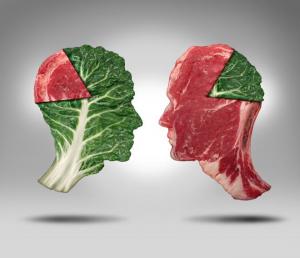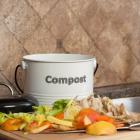A double whammy, updating your health and minimizing your environmental impact via your fridge
Submitted by Joel on | Updated Sat, 17/09/2016 - 23:49

When it comes to assessing (and reducing!) your impact, we encourage each environmentalist to look at all aspects of their life. Most of what we do consumes energy, and thus nearly everything we do can be put under the WYI microscope and this certainly includes eating. In fact, agriculture is a much more significant contributor to global emissions than you might think, and coupled with forestry it is a close second only to electricity and heat generation.1
When it comes to food, all calories are not created equal. You may have heard the intensive resources it takes to produce the meat on your table. Though it can be difficult to wrap your head around complex issues like land use, water use, and food supply, (see Tori’s great summary of the issues here) this article will focus on the greenhouse emissions of your fish, pork, dairy and beef. The carbon footprint (or carbon-equivalent) of various food items vary greatly even before you factor in transportation costs! We hope you are already buying local, but the following holds true for the food on your table regardless of how far it traveled to get there.
If you love a good steak, brace yourself, because beef is the worst of the bunch. Here is a quick summary with information from a 2014 article in Nature Magazine, “Global diets link environmental sustainability and human health”:2
-
Per calorie, production of beef and lamb accounts for at least 5 to 10 times the amount of carbon-equivalent emissions for poultry, dairy, and eggs.
-
Per calorie, production of beef products accounts for at least 10 to 50 times the amount of carbon-equivalent emissions for cereals, fruits, vegetables and legumes.
-
The impact of fish products can vary widely, from 20% to 80% of the same amount of calories in beef. (The manner in which fish is harvested makes an extremely large difference.)
Even after reading these numbers, many would argue that calories might not be our most useful measurement when comparing meat to our veggies. What about protein? In fact, beef’s ratio of emissions per gram of protein is actually WORSE when compared against fish, poultry, dairy, eggs and legumes. However, most vegetables carry negligible amounts of protein, so a change in diet needs to include plenty of root vegetables and legumes to meet your nutritional needs.
This concept is a double whammy, updating your health and minimizing your environmental impact via your fridge. It was reported in 2012 that the average American eats 50% more meat products per day than the recommended amount3, and our consumption has only grown. This is not healthy, as the same article from Nature points out with a grim note:
“Diets of many people with moderate and higher incomes are shifting in ways associated with increases in non-communicable diseases, including type II diabetes, coronary heart disease and cancer, and with higher all-cause mortality rates”
This shifting global demand, coupled with our growing population, could increase yearly emissions due to food production by 80%!2 This 80% increase is the equivalent of all the emissions for all transportation in 2010. However, if by 2050, global diets change to the average of vegetarian and Mediterranean diets, there would be a 0% increase.
So, what do we do?
Make a change. There are an abundance of options when it comes to changing your diet. Here is a short list of easy steps my family has taken recently:
-
For breakfast
-
Eat oatmeal or toast instead of cereal. My family halved our milk intake since making this switch. Sometimes I miss cereal though, in which case I use almond/soy milk.
-
When we have eggs or omelets, we consider that our protein intake for the day. No meat for the rest of the day!
-
-
For lunch
-
Cut out the lunch-meat sandwiches. All that processing is no good for you anyway. I like to substitute with avocado.
-
Use less cheese – I know this one is tough.
-
-
For dinner
-
Simply less meat! If the step to full veggie or vegan is daunting, start with one recipe at a time. Replace a chicken or fish based meal with legumes and veggies, and replace your beef with chicken, pork or fish.
-
My household gets a lot of our food ideas online. If you do the same, try frequenting these websites, or just the words “vegetarian” or “vegan” in your search. There are so many good blogs:
-
http://www.thugkitchen.com/recipes (beware - some language)
-
Let’s finish up with a few final thoughts.
Your change matters. When you choose alternative foods, local foods and less processed foods, you are creating a demand for more sustainably produced products. I hope to develop the idea of alternative foods in another post, but it is amazing to see how a groundswell for these products is impacting industry trends and producers like Kraft, General Mills and Nestle.
Regardless of the persuasive power of this blog, meat is for many people an important part of their diet. When you ARE buying meat, ensure you are buying sustainably harvested products. There’s a lot of research to do for every product – http://www.sustainabletable.org/ has a good guide.
Finally, tell a friend what you are doing. I grew up in a home where my mother controls the kitchen, so she was the first person I brought my activism too. Red meat has been virtually eliminated in her household too.
Works cited:
You will save the Earth by sharing and/or tweeting (corny right?)





